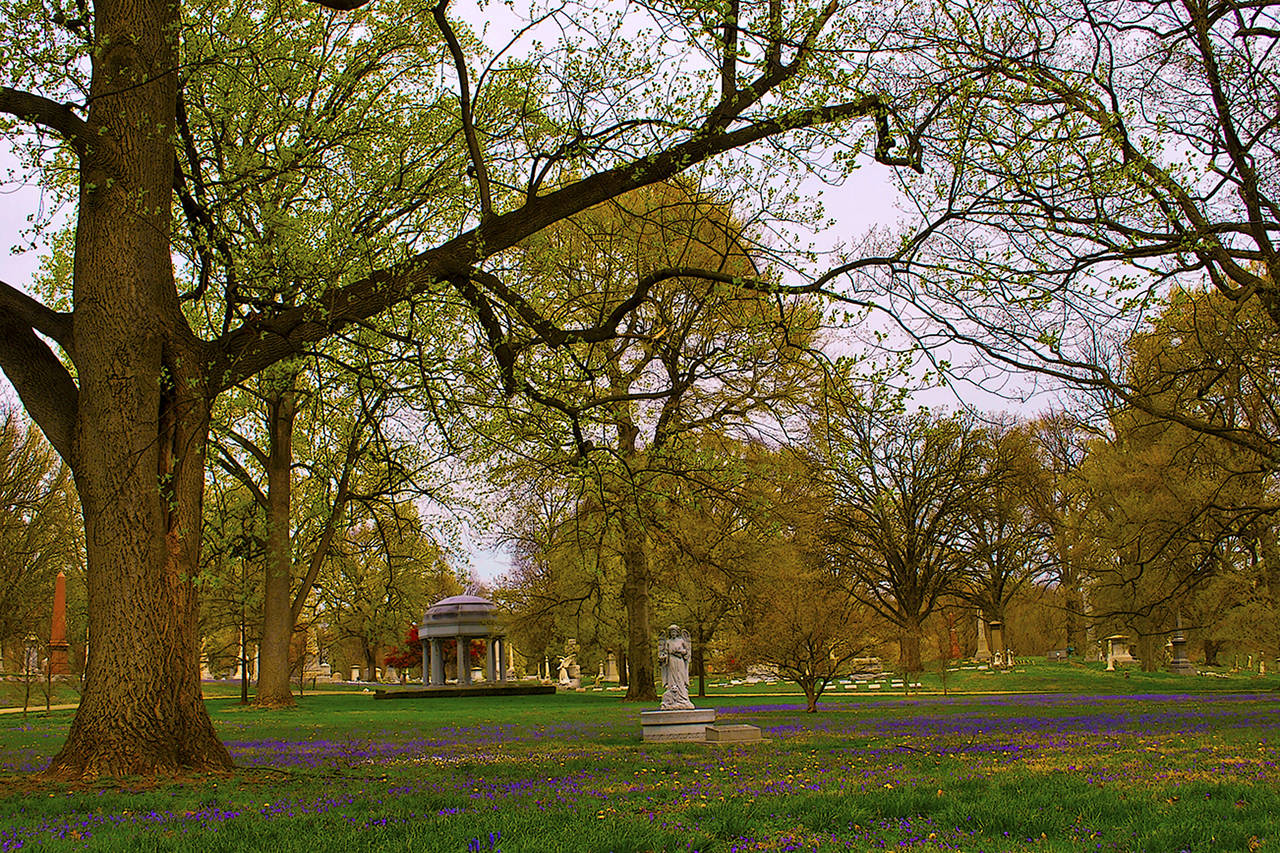By Katie Lutz
WSU Master Gardener
Gardens can be found just about anywhere. I’ve seen gardens on the walls and roofs of buildings, in repurposed objects like bathtubs and toolboxes, and hidden inside already existing landscapes.
One of the most unexpected places to find a garden, though, is a cemetery. This may not surprise everyone, but cemeteries have played an important role in the development and preservation of green spaces in the United States.
Cemeteries for most of human history have been utilitarian and mostly confined to small plots of land consecrated near a church. These spaces were designed to contain the dead. The focus of these physical spaces was not on the potential plant life within or even remembrance of the living, but on the physical signaling that you were entering a different world, with elaborate entrances, fences and grave markers.
This began to change with the increase of populations in urban spaces, especially in the United States. Traditional burial grounds were simply running out of space for the dead and were becoming vectors for major disease outbreaks.
The solution to these issues came in the early 19th century, when the first rural cemetery was built outside Boston: Mount Auburn cemetery. It was nicknamed the “garden of graves” because of its spectacular, well-maintained gardens. People flocked to Mount Auburn to picnic, stroll and engage in a variety of activities. This design caught on, and soon rural cemeteries could be found everywhere.
This also reflected a cultural shift in attitudes toward death. Instead of becoming cities of the dead, they became spaces that focused on the living and the remembrance of the lives of those who passed. Having these spaces open to all also allowed people who were living in these new densely urban environments access to nature. In essence, these rural cemeteries became America’s first public parks. It wasn’t until the mid to late 19th century that spaces specifically designated as public parks came into existence, and they were in part inspired by the rural cemetery movement.
As with all things, the focus of cemeteries began to shift as public parks became more prevalent and burial techniques became far more efficient. The living visited only for burial services and occasional remembrances, and the cemeteries once again became mostly a space for the dead.
They were also overtaken by encroaching urban sprawl and often left abandoned. Some gardens still existed, but mostly as part of “memorial parks” that were left relatively untended.
That has fortunately changed in the past 30 years. Many rural cemeteries have been protected by community groups and preservation societies — not just for the history and out of respect for the dead, but to reclaim these green spaces in a world that is often disconnected from nature.
In addition, rural cemeteries are turning out to be great locations for habitat preservation and restoration. In the Midwest, some of the last remaining pieces of native prairie habitat can be found in cemeteries. Sometimes that was by accident (space was not used), and sometimes it was by design (native plant gardens).
So, the next time you go visit a public park, there is a chance that you may be sharing it with more than just the living.
Katie Lutz, of Hoquiam, joined the WSU Master Gardener Program in 2016. To learn more about the WSU Master Gardener Program in Grays Harbor and Pacific Counties, visit PNWMG.org.


